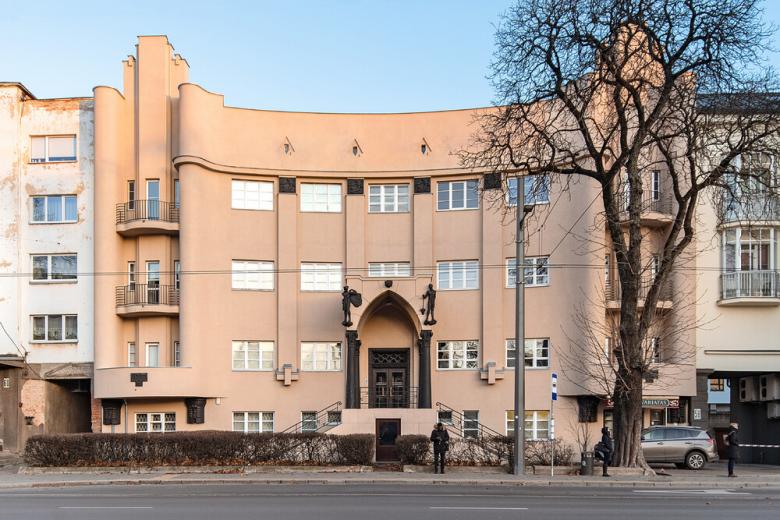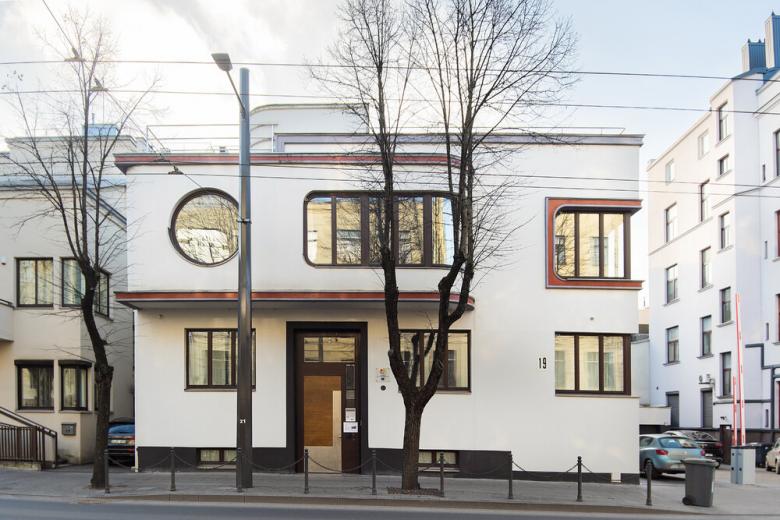Modernist Kaunas Added to UNESCO World Heritage List
John Hill
25. September 2023
Photo © Martynas Plepys / Kaunas City Municipality Administration
Subtitled “Architecture of Optimism, 1919-1939,” Modernist Kaunas is one of 42 newly inscribed properties on the UNESCO World Heritage List, as approved by the UNESCO World Heritage Committee during its annual meeting in Riyadh last week.
Of the 33 cultural sites and nine natural sites, Modernist Kaunas is most relevant to World-Architects because it is architectural and it is modern; in turn, it stands out among the ancient monuments, archaeological sites, cultural landscapes, and other centuries-old sites that comprise the list. It was just last year that we took a close look at Kaunas, the provisional capital of Lithuania from 1919 to 1939: the city served as the 2022 European Capital of Culture.
After Vilnius fell under Polish control and Kaunas became the Lithuanian capital, “overnight it turned into a European capital,” Ulf Meyer wrote upon visiting the city. With a lot of help from modern architecture, “public and private buildings, including a parliament, embassies, and a national bank, but also offices, schools, and residences, were built quickly and by the thousands; about half of them are still around today.”
As Kaunas was rolling out the red carpet as European Capital of Culture, it was awaiting word on its nomination for the UNESCO World Heritage List (PDF link). Some optimism paralleling the optimism of the modern architecture created in Kaunas in the interwar period had already come from the European Commission, which gave the city's interwar architecture a European Heritage Label in 2014; the label recognizes sites (60 between 2013 and 2021) that are “milestones in the creation of today’s Europe.”
House of Jurgis and Aleksandra Iljinas, Arnas Funkas, 1933 (Photo © Martynas Plepys / Kaunas City Municipality Administration)
"This property testifies to the rapid urbanization that transformed the provincial town of Kaunas into a modern city that became Lithuania’s provisional capital between the First and Second World Wars. Its community-driven transformation of an urban landscape was adapted from an earlier town layout. The quality of modern Kaunas was manifested through the spatial organization of the Naujamiestis (New Town) and Žaliakalnis (Green Hill) areas, and in public buildings, urban spaces and residences constructed during the interwar period that demonstrate a variety of styles in which the Modern Movement found architectural expression in the city."
With its inscription on the nearly 1,200-strong UNESCO World Heritage List, Modernist Kaunas joins these few other ensembles (not individual buildings) of modern architecture (chronological by date of inscription, in parentheses):
- Bauhaus and its Sites in Weimar, Dessau and Bernau (1996)
- Ciudad Universitaria de Caracas (2000)
- Central University City Campus of the Universidad Nacional Autónoma de México (UNAM) (2007)
- The Architectural Work of Le Corbusier, an Outstanding Contribution to the Modern Movement (2016)
- Pampulha Modern Ensemble (2016)
- The 20th-Century Architecture of Frank Lloyd Wright (2019)

